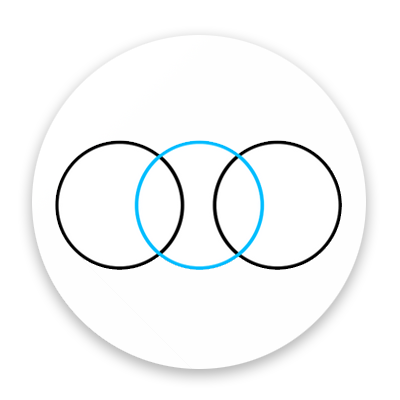I had researched through books and internet about Hayao Miyazaki, his filmography and the auteur theory. This was the biggest challenge I had so far. I enjoyed watching and exploring his films, and I couldn't stop thinking about them including Spirited Away (2001), Laputa: Castle in the Sky (1986) and My Neighbour Totoro (1988).
I could remember watching Princess Mononoke (1997) several years ago and my first thought, it could be an ordinanry animated film like Disney. However the film turned out to be violent and more suited for adult audiences, I was shocked by the iconic scene where Ashitaka shot the arrow that cut the samurai's arms clean off. I was amazed by the portrayal of women in his films compared to those in Disney films. Miyazaki was the main inspiration of my film and I would call him an auteur of animation.
Here were the references and Miyazaki's filmography for the research:
- The Castle of Cagliostro (1979)
- Nausicaa of the Valley of the Wind (1984)
- Laputa: Castle in the Sky (1986)
- My Neighbour Totoro (1988)
- Kiki's Delivery Service (1989)
- Porco Rosso (1992)
- Princess Mononoke (1997)
- Spirited Away (2001)
- Howl's Moving Castle (2004)
- Ponyo (2008)
- The Wind Rises (2013)
- The Kingdom of Dreams and Madness (Sunada, 2013)
- Oxford Dictionary of Film Studies (2012, A. Kuhn & G. Westwell, Oxford University Press)
- The Cinema of Hayao Miyazaki (2011, J.M. Robinson, Crescent Moon Publishing)
- Understanding Film Theory (2011, C. Etherington-Wright & R. Doughty, Palgrave Macmillian)
- Internet Movie Database (IMdB) - Hayao Miyazaki and all of his eleven films
- Wikipedia - Hayao Miyazaki and all of his eleven films
- The Studio Ghibli Retrospective articles on Miyazaki's films with exception of The Castle of Cagliostro. They were written by Christopher Runyon for Movie Mezzanine.
- The Wind Rises reviews - IndieWire, The Verge, The Guardian, Village Voice, Slate, The Telegraph, Paste, The List, New York Times and Little White Lies
- Nausicaa.net - Hayao Miyazaki and his biography in detail
I wrote the notes from a sound documentary about Studio Ghibli.
This film, also about Studio Ghibli, was recently released on YouTube this year.
I had this short documentary on Nausicaa DVD which I would use for the research.
In this clip, I used the bit where it discussed about Miyazaki being a feminist.
Miyazaki had directed few episodes of Lupin III series before his debut feature-length film.
This was his first biggest hit, based on his own manga about environmentalism and human survival.
A post-modern version of Treasure Island, featuring his recurring theme of flight and technology.
This story portrays a gulf between independence and reliance in teenage girls. This became the highest-grossing film of 1989 in Japan.
Inspired by Akira Kurosawa's Seven Samurai (1954), a epic tale about the battle between man and nature, with a love story.
Miyazaki combined two of his recurring motifs: a powerful, older woman and a strong younger woman into a character in the film's heroine, Sophie.
A light-heartened dramedy about strong girls and forest spirits. This gave a lot of energy and humour to kids and adults alike.
His hommage to aviation history and Hollywood. This was the first time Miyazaki introduced an adult protagonist instead of a recurring young hero.
An Oscar-winning film is the most acclaimed and most successful of his filmography. I admired everything about this film.
A post-modern adaptation of The Little Mermaid, featuring another recurring motif; water which is prominent in his films.
The trailer states The Wind Rises is his final masterpiece, a fictionalised biopic about Jiro Horikoshi, who designed Zero fighter planes. This is one of his films that reflected his childhood especially growing up during WW2.
I had an idea about a documentary The Kingdom of Dreams and Madness (2013), about the insight of the founders of Studio Ghibli over the course of a year as they were about to release The Wind Rises and The Tale of Princess Kaguya (2014). At first, I thought it mainly focused on the production of The Wind Rises however I later decided to watch it because it was too early for writers to analyse The Wind Rises and not enough information about it. When I watched, I was amazed that there were several hints about Miyazaki's childhood, the production side and his artistic control over his films.
This clip would be useful for my film. This was about his love of planes, a recurring motif in his films.
From 01:10, there was a montage of Miyazaki's films while he mused about the possibilities in animation. This would inspire the montage at the end of my film.
This clip would be used for my film.
I would only use "I'm quite serious" bit of this clip.
The part of John Lasseter's speech, the one at the very end of the clip below, would be for the montage at the end of my film.
I had been doing the pin-board on Studio Ghibli long before I started the film. Here is the image of the pin-board from Pinterest below.
Beyond Clueless (Lyne, 2014) is another inspiration for my film and I talked about this film in my blog. This was edited in Final Cut Pro X, the editing software I used for my film. Throughout the film, it only featured clips from over 200 teen films and the narration. As I came to see the preview screening and Q&A, Lyne revealed that he and his small team watched the films, and wrote down time codes and scenes. This led to creating several montages he edited, and they inspired the montages in my film, including the water montage. The way he and his team worked on pre-production was also the inspiration for my research and watching the films.
















